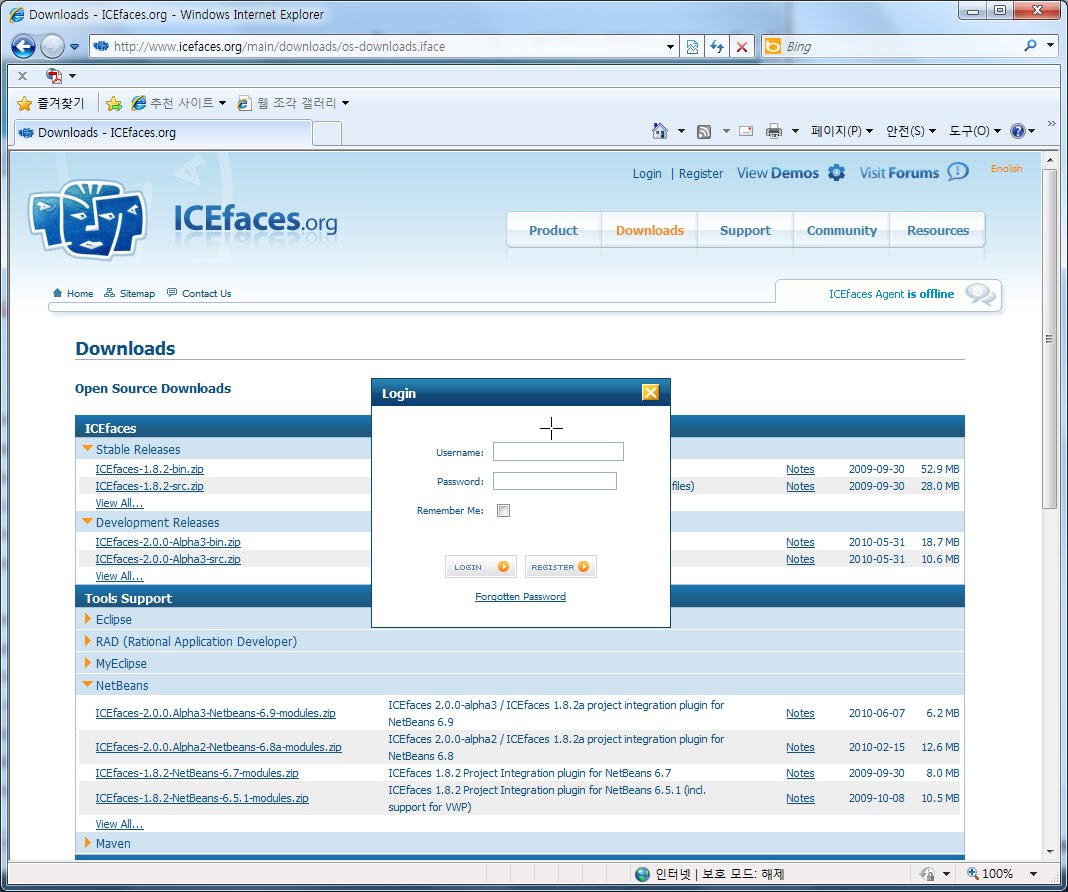

The state of UI components and other objects of scope interest is saved at the end of each request in a process called stateSaving (note: transient true), and restored upon next creation of that view. The FacesServlet processes requests, loads the appropriate view template, builds a component tree, processes events, and renders the response (typically in the HTML language) to the client. JSF 1.0 () – Initial specification released.īased on a component-driven UI design-model, JavaServer Faces uses XML files called view templates or Facelets views.JSF 1.2 () – Many improvements to core systems and APIs.JSF 2.0 () – Major release for ease of use, enhanced functionality, and performance.Only a very minor number of specification changes. JSF 2.1 () – Maintenance release 2 of JSF 2.0.
#Websphere 9 icefaces portable
JSF 2.2 () – Introduced new concepts like stateless views, page flow and the ability to create portable resource contracts.JSF 2.3 () – Major features: search Expressions, extensionless URLs, bean validation for complete classes, push communication using WebSocket, enhanced integration with CDI.
 JSF 2.3 () – The first release of the Jakarta Server Pages API for Jakarta EE.Neither the API nor the behavior has changed. JSF 3.0.0 () – Package name changed from Javax to Jakarta. JSF 4.0 () – Major features: Deleted some deprecated things (native managed beans, native EL references), no extended view by default, added ClientWindowScoped. JSF 2.0 also includes a number of other changes like adding support for events, separate development, staging, and production modes, similar to RAILS_ENV in Ruby on Rails, and significantly expanding the standard set of components. This includes logical naming and versioning of resources. The latest JSF release has built-in support for handling resources like images, CSS and Javascript, allowing artifacts to be included with component libraries, separated into JAR files, or simply co-located into a consistent place within the Web application. The addition of Partial State Saving and Document Object Model (DOM) updates are part of the built-in standardized AJAX support. Page transitions can be invoked simply by passing the name of the desired View or Facelet. Navigation is also simplified, removing the need for faces-config.xml navigation cases. The new JSF developments also provide wide accessibility to Java annotations such as and that removes the need for faces-config.xml, in all cases except framework extension. This eliminates the life-cycle conflicts that existed with JSP, forcing workarounds by Java developers. Latest developments įacelets (which was designed specifically for Java Server Faces) was adopted as the official view technology for JSF 2.0. In June 2001, JavaWorld would report on Amy Fowler's team's design of "the JavaServer Faces API" (also known as "Moonwalk") as "an application framework for creating Web-based user interfaces". In 2001, the original Java Specification Request (JSR) for the technology that ultimately became JavaServer Faces proposed developing a package with the name
JSF 2.3 () – The first release of the Jakarta Server Pages API for Jakarta EE.Neither the API nor the behavior has changed. JSF 3.0.0 () – Package name changed from Javax to Jakarta. JSF 4.0 () – Major features: Deleted some deprecated things (native managed beans, native EL references), no extended view by default, added ClientWindowScoped. JSF 2.0 also includes a number of other changes like adding support for events, separate development, staging, and production modes, similar to RAILS_ENV in Ruby on Rails, and significantly expanding the standard set of components. This includes logical naming and versioning of resources. The latest JSF release has built-in support for handling resources like images, CSS and Javascript, allowing artifacts to be included with component libraries, separated into JAR files, or simply co-located into a consistent place within the Web application. The addition of Partial State Saving and Document Object Model (DOM) updates are part of the built-in standardized AJAX support. Page transitions can be invoked simply by passing the name of the desired View or Facelet. Navigation is also simplified, removing the need for faces-config.xml navigation cases. The new JSF developments also provide wide accessibility to Java annotations such as and that removes the need for faces-config.xml, in all cases except framework extension. This eliminates the life-cycle conflicts that existed with JSP, forcing workarounds by Java developers. Latest developments įacelets (which was designed specifically for Java Server Faces) was adopted as the official view technology for JSF 2.0. In June 2001, JavaWorld would report on Amy Fowler's team's design of "the JavaServer Faces API" (also known as "Moonwalk") as "an application framework for creating Web-based user interfaces". In 2001, the original Java Specification Request (JSR) for the technology that ultimately became JavaServer Faces proposed developing a package with the name






 0 kommentar(er)
0 kommentar(er)
